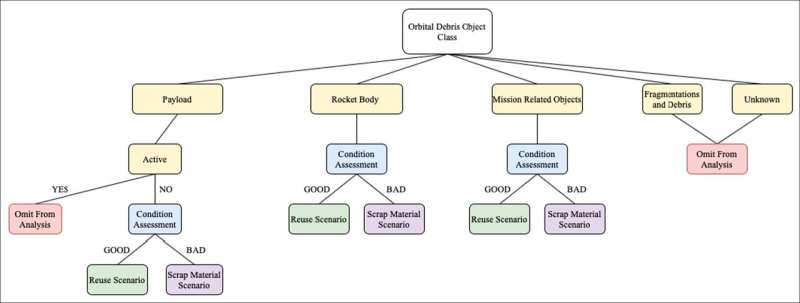Ian Williams, Professor of Applied Environmental Science, and Applied GIS and Remote Sensing Master's graduate Ryan Leonard have developed a method to estimate the value and mass of orbital debris—providing a case for a circular economy.
"If the financial value of retrieving space debris is high enough, investment into the technology to do so is justified," said Professor Williams.
Through their research, Professor Williams and Mr. Ryan calculated the reuse of space junk could have a net value of between $570 billion and $1.2 trillion.This amounts to somewhere between 5,312 and 19,124 tons of scrap metal. Active debris removal (ADR)—such as the plasma thruster invented by the University of Southampton's Dr. Minkwan Kim, which is designed to safely deorbit end-of-life satellites—is one possible solution.
Professor Williams added, "The development of in-orbit services, such as extending the life of inactive satellites, or the advancement of ADR, will be crucial to solve the orbital debris problem. But, with this, a future circular economy for space may be financially viable, with potentially beneficial consequences for risk reduction; resource efficiency; additional high-value employment; and climate-change knowledge, science, monitoring and early warning data."
The research findings are published in the journal Waste Management.
More information: Ryan Leonard et al, Viability of a circular economy for space debris, Waste Management (2022). DOI: 10.1016/j.wasman.2022.10.024
Provided by University of Southampton



